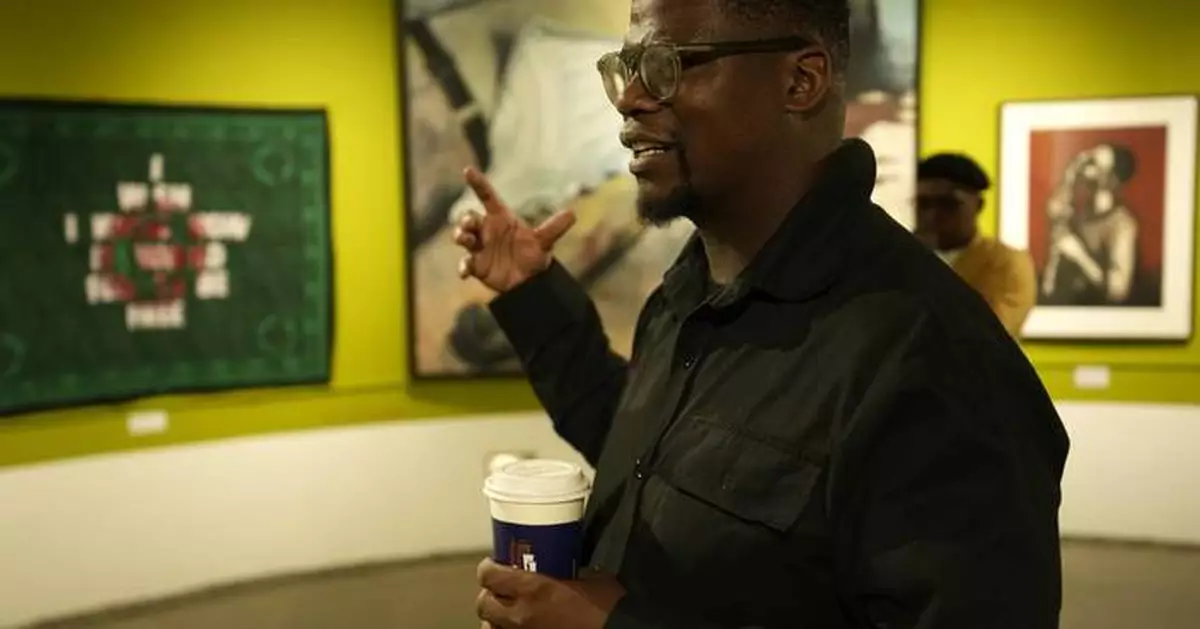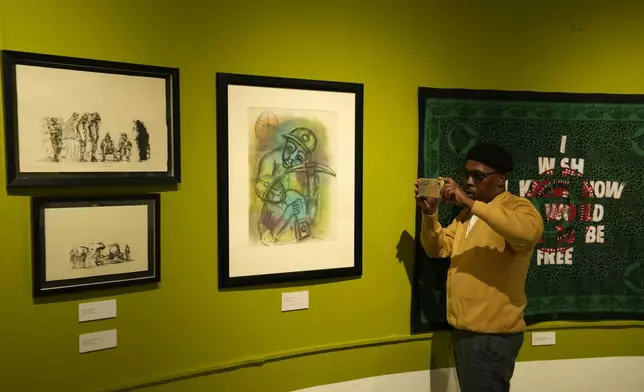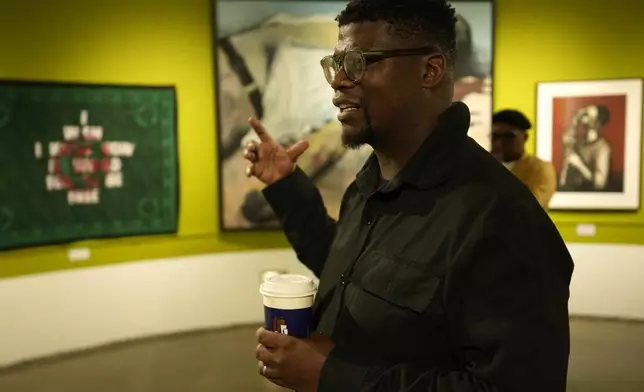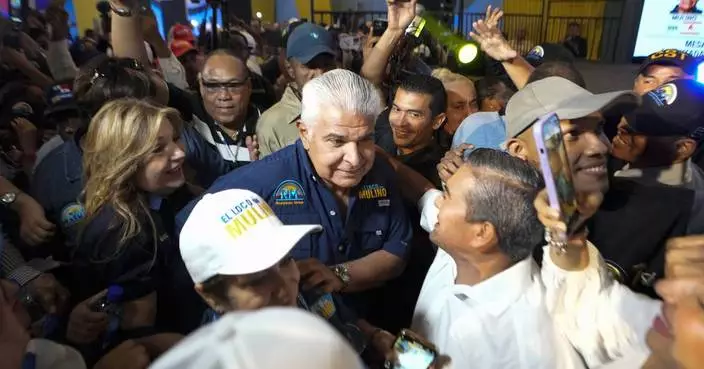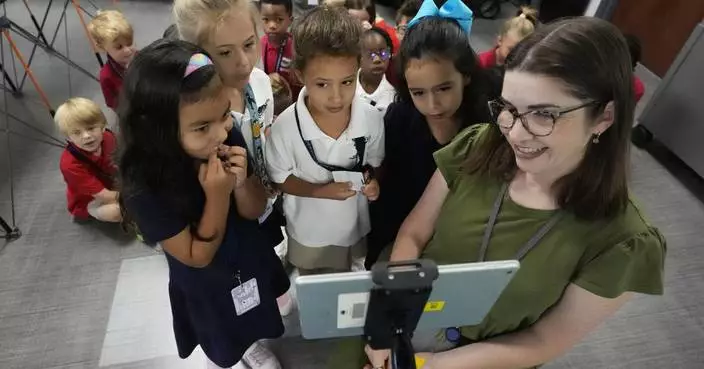JOHANNESBURG (AP) — A selection of South African artworks produced during the country’s apartheid era which ended up in foreign art collections is on display in Johannesburg to mark 30 years since the country's transition to democracy in 1994.
Most of the artworks were taken out of the country by foreign tourists and diplomats who had viewed them at the Australian Embassy in the capital, Pretoria. The embassy had opened its doors to Black artists from the townships to be recognized and have their artworks on full display to the public.
Click to Gallery
JOHANNESBURG (AP) — A selection of South African artworks produced during the country’s apartheid era which ended up in foreign art collections is on display in Johannesburg to mark 30 years since the country's transition to democracy in 1994.
An work by artist Lawrence Lemaoana at an exhibition at the Apartheid Museum in Johannesburg, South Africa, Wednesday, April 24, 2024. A selection of artworks which were produced during the country's apartheid era and ended up in foreign art collections are on display to mark 30 years since the country's transition to democracy in 1994. (AP Photo/Themba Hadebe)
Visitors view an art exhibition at the Apartheid Museum in Johannesburg, South Africa, Wednesday, April 24, 2024. A selection of artworks which were produced during the country's apartheid era and ended up in foreign art collections are on display to mark 30 years since the country's transition to democracy in 1994. (AP Photo/Themba Hadebe)
Artist Michael Selekane takes a photograph of his work at an exhibition at the Apartheid Museum in Johannesburg, South Africa, Wednesday, April 24, 2024. A selection of artworks which were produced during the country's apartheid era and ended up in foreign art collections are on display to mark 30 years since the country's transition to democracy in 1994. (AP Photo/Themba Hadebe)
Artist Lawrence Lemaoana at an exhibition at the Apartheid Museum in Johannesburg, South Africa, Wednesday, April 24, 2024. A selection of artworks which were produced during the country's apartheid era and ended up in foreign art collections are on display to mark 30 years since the country's transition to democracy in 1994. (AP Photo/Themba Hadebe)
The artworks, which reflect the daily struggles of the country’s Black majority during the apartheid era and the effects of racial segregation policies, are on display alongside works by some of South Africa’s exciting contemporary artists.
The exhibition creates a blend of perspectives on South Africa through the eyes of artists who lived during and after the country's most difficult period.
It is a culmination of efforts to repatriate African artworks, artifacts and valuable cultural items to Africa by organizations such as the Ifa Lethu Foundation, which is hosting the exhibition.
The organization has repatriated more than 700 pieces, including works by South African artist Gerard Sekoto, who died in Paris in 1993.
Similar efforts have been made across Africa, including in Benin and Nigeria.
Some of the highlights of the exhibit are an undated piece titled “For the Children” by renowned South African artist and sculptor Dumile Feni, who died in New York in 1991 before he could return to South Africa to witness the end of apartheid.
A 1987 piece titled “Mineworkers” by South African artist Mike Khali which addresses the plight of migrant workers in South African gold mines is also part of the exhibition, which is being held at the Apartheid Museum in Johannesburg.
Michael Selekane, a contemporary artist whose work is part of the exhibition, pointed out some of the technical hurdles faced by artists who came before him.
“The use of material was limited for them. That is why most of their work is black and white, and it is prints. Painting was an expensive medium to work on, their conditions were tough,” he said.
Selekane's “Rosy Future” and “Shattered” are part of the exhibition.
“We need to reflect on the fact that we did not just magically emerge as artists, there were people who laid the way forward regardless of whether their context was difficult, complicated, undoable, they were resilient in what they were doing,” said Lawrence Lemaoana, a contemporary artist whose work is also on show.
“In this period, art by black artists was not considered worth including in South African museums, galleries or corporate or private collections,” notes exhibition curator Carol Brown.
“With the exception of a few outliers — including workshops such as Polly Street in Johannesburg and the Evangelical Lutheran Centre at Rorke’s Drift, established by foreign missionaries in the former province of Natal — art education for black artists was minimal."
“For much of their lives, art materials, books and exhibitions were denied to them,” Brown writes in her curator’s statement.
The works have been grouped thematically, she says: Suffering and Conflict, Dreams of the Future, Leisure and Culture, City of Gold, Whose Land Is It? and The Beginning.
“These themes invite contemplation of the socio-political landscape of present-day South Africa, but also allow us to see how the past influences and shapes the present — and how contemporary visions can highlight the modernity in the overlooked and undervalued art produced under the terrible constraints of apartheid,” she said.
The exhibition runs until July 31.
AP Africa news: https://apnews.com/hub/africa
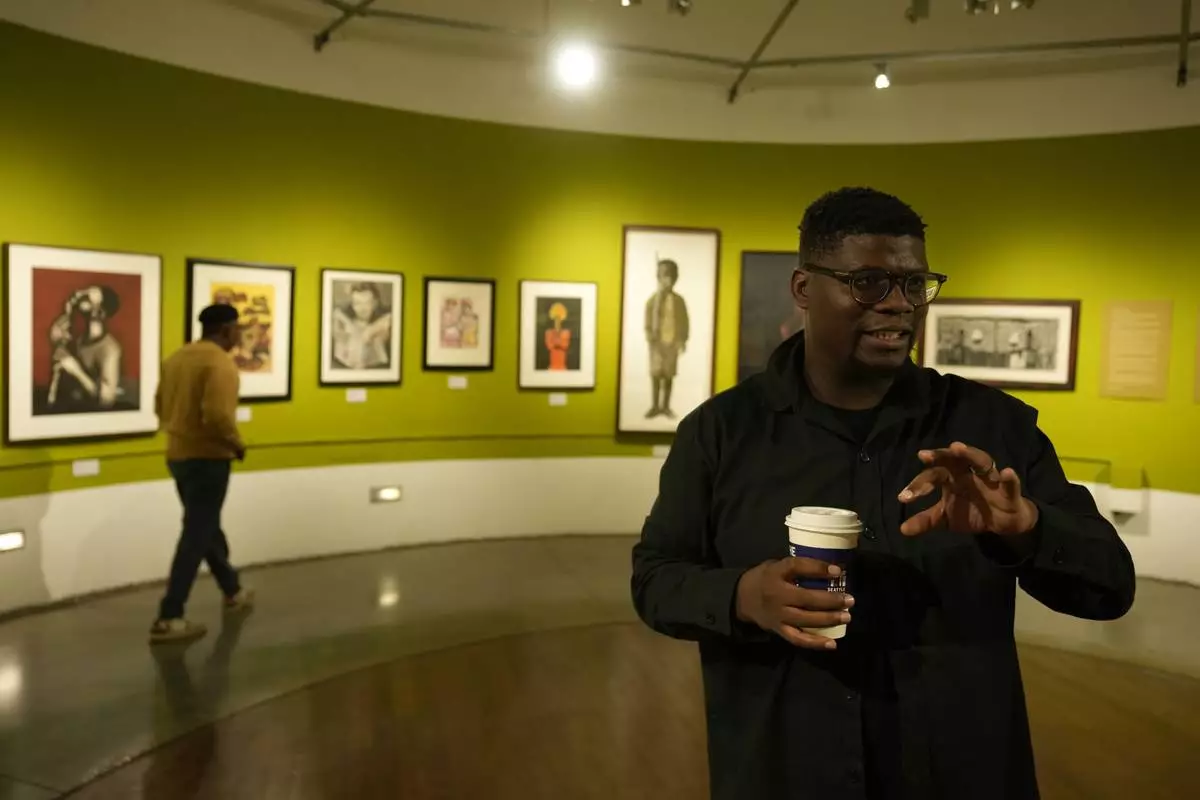
Artist Lawrence Lemaoana at an exhibition at the Apartheid Museum in Johannesburg, South Africa, Wednesday, April 24, 2024. A selection of artworks which were produced during the country's apartheid era and ended up in foreign art collections are on display to mark 30 years since the country's transition to democracy in 1994. (AP Photo/Themba Hadebe)
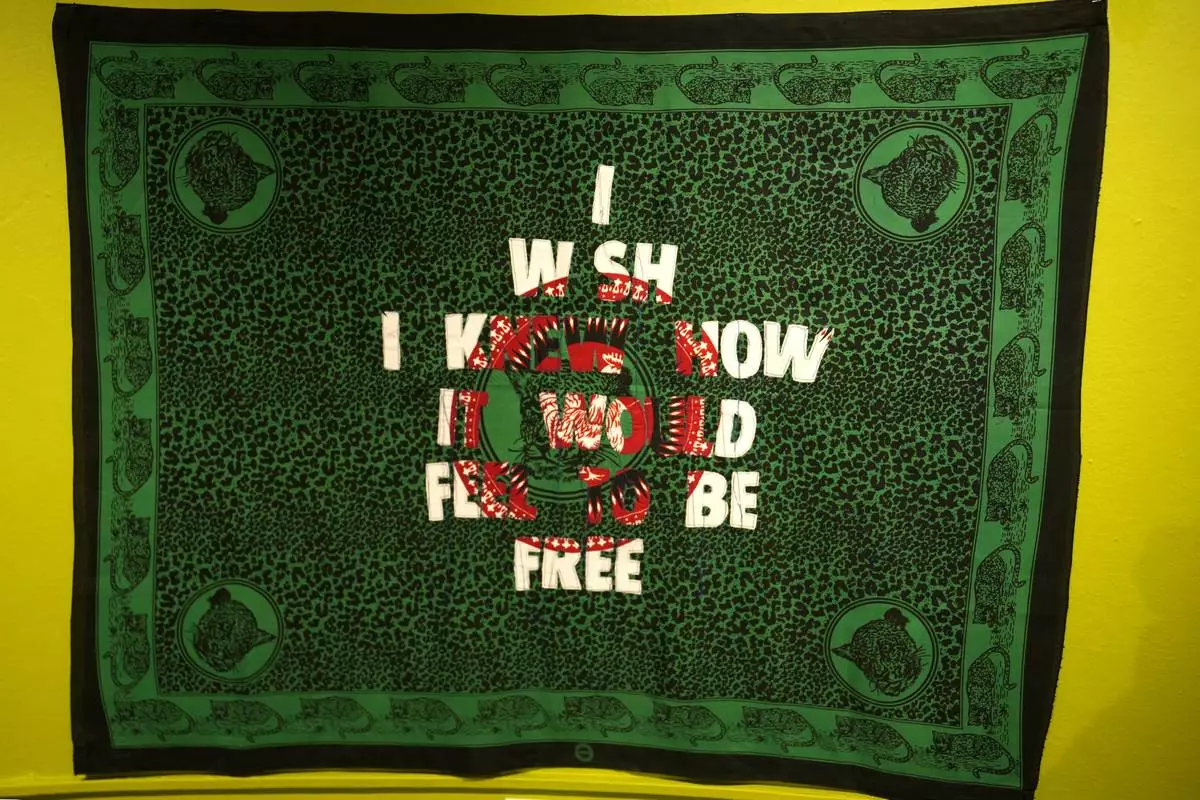
An work by artist Lawrence Lemaoana at an exhibition at the Apartheid Museum in Johannesburg, South Africa, Wednesday, April 24, 2024. A selection of artworks which were produced during the country's apartheid era and ended up in foreign art collections are on display to mark 30 years since the country's transition to democracy in 1994. (AP Photo/Themba Hadebe)
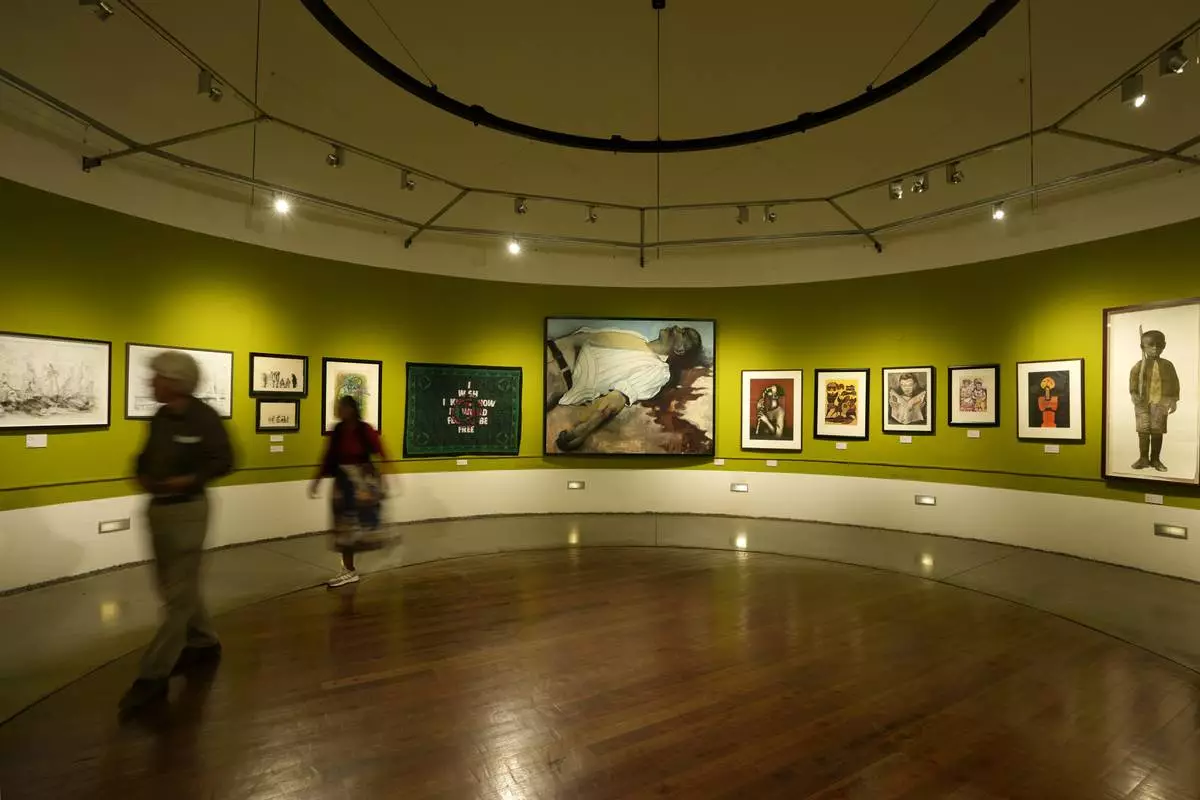
Visitors view an art exhibition at the Apartheid Museum in Johannesburg, South Africa, Wednesday, April 24, 2024. A selection of artworks which were produced during the country's apartheid era and ended up in foreign art collections are on display to mark 30 years since the country's transition to democracy in 1994. (AP Photo/Themba Hadebe)

Artist Michael Selekane takes a photograph of his work at an exhibition at the Apartheid Museum in Johannesburg, South Africa, Wednesday, April 24, 2024. A selection of artworks which were produced during the country's apartheid era and ended up in foreign art collections are on display to mark 30 years since the country's transition to democracy in 1994. (AP Photo/Themba Hadebe)

Artist Lawrence Lemaoana at an exhibition at the Apartheid Museum in Johannesburg, South Africa, Wednesday, April 24, 2024. A selection of artworks which were produced during the country's apartheid era and ended up in foreign art collections are on display to mark 30 years since the country's transition to democracy in 1994. (AP Photo/Themba Hadebe)
FORT LAUDERDALE, Fla. (AP) — Brad Parscale was the digital guru behind Donald Trump's surprise victory in the 2016 election and was promoted to manage the 2020 campaign. But he didn't last long on that job: His personal life unraveled in public and he later texted a friend that he felt “guilty” for helping Trump win after the riot at the U.S. Capitol.
He's since become an evangelist about the power of artificial intelligence to transform how Republicans run political campaigns. And his company is working for Trump's 2024 bid, trying to help the presumptive Republican nominee take back the White House from Democratic President Joe Biden.
Here's what to know about Parscale and his new role:
Parscale says his company, Campaign Nucleus, can use AI to help generate customized emails, parse oceans of data to gauge voter sentiment and find persuadable voters. It can also amplify the social media posts of “anti-woke” influencers, according to an Associated Press review of Parscale’s public statements, his company documents, slide decks, marketing materials and other records not previously made public.
Soon, Parscale says, his company will deploy an app that harnesses AI to assist campaigns in collecting absentee ballots in the same way drivers for DoorDash or Grubhub pick up dinners from restaurants and deliver them to customers.
Parscale was a relatively unknown web designer in San Antonio, Texas, when he was hired to build a web presence for Trump's family business.
That led to a job on the future president’s 2016 campaign. He was one of its first hires and spearheaded an unorthodox digital strategy, teaming up with scandal-plagued Cambridge Analytica to help propel Trump to the White House.
“I pretty much used Facebook to get Trump elected in 2016,” Parscale said in a 2022 podcast interview.
Following Trump’s surprise win, Parscale’s influence grew. He was promoted to manage Trump's reelection bid and enjoyed celebrity status. A towering figure at 6 feet, 8 inches with a Viking-style beard, Parscale was frequently spotted at campaign rallies taking selfies with Trump supporters and signing autographs.
Parscale was replaced as campaign manager not long after a rally in Tulsa, Oklahoma, drew an unexpectedly small crowd, enraging Trump.
Since last year, Campaign Nucleus and other Parscale-linked companies have been paid more than $2.2 million by the Trump campaign, the Republican National Committee and their related political action and fundraising committees, campaign finance records show.
Parscale did not respond to questions from the AP about what he’s doing for the Trump campaign. Trump has called artificial intelligence “so scary” and “dangerous,” while his campaign, which has shied away from highlighting Parscale’s role, said in an emailed statement that it did not “engage or utilize” tools supplied by any AI company.
Parscale-linked companies have been paid to host websites, send emails, provide fundraising software and digital consulting, campaign finance records show.
The Biden campaign and Democrats are also also using AI. So far, they said they are primarily deploying the technology to help them find and motivate voters and to better identify and overcome deceptive content.
Last year, Parscale bought property in Midland, Texas, in the heart of the nation’s highest-producing oil and gas fields. It is also the hometown of Tim Dunn, a billionaire born-again evangelical who is among the state’s most influential political donors.
In April of last year, Dunn invested $5 million in a company called AiAdvertising that once bought one of Parscale’s firms under a previous corporate name. The San Antonio-based ad firm also announced that Parscale was joining as a strategic adviser, to be paid $120,000 in stock and a monthly salary of $10,000.
“Boom!” Parscale tweeted. “(AiAdvertising) finally automated the full stake of technologies used in the 2016 election that changed the world.”
AiAdvertising added two key national figures to its board: Texas investor Thomas Hicks Jr. — former co-chair of the RNC and longtime hunting buddy of Donald Trump Jr. — and former GOP congressman Jim Renacci. In January, Dunn gave AiAdvertising an additional $2.5 million via an invesment company, and AiAdvertising said in a news release that the cash infusion would help it “generate more engaging, higher-impact campaigns.”
Dunn declined to comment, and AiAdvertising did not respond to messages seeking comment.
Parscale occasionally offers glimpses of the AI future he envisions. Casting himself as an outsider to the Republican establishment, he has said he sees AI as a way to undercut elite Washington consultants, whom he described as political parasites.
In January, Parscale told a crowd assembled at a grassroots Christian event in a Pasadena, California, church that their movement needed “to have our own AI, from creative large language models and creative imagery, we need to reach our own audiences with our own distribution, our own email systems, our own texting systems, our own ability to place TV ads, and lastly we need to have our own influencers.”
—-
Burke reported from San Francisco. AP National Political Writer Steve Peoples in Washington and Associated Press researcher Rhonda Shafner in New York contributed to this report.
—-
This story is part of an Associated Press series, “The AI Campaign,” that explores the influence of artificial intelligence in the 2024 election cycle.
—-
Contact AP’s global investigative team at Investigative@ap.org or https://www.ap.org/tips/
—-
The Associated Press receives financial assistance from the Omidyar Network to support coverage of artificial intelligence and its impact on society. AP is solely responsible for all content. Find AP’s standards for working with philanthropies, a list of supporters and funded coverage areas at AP.org
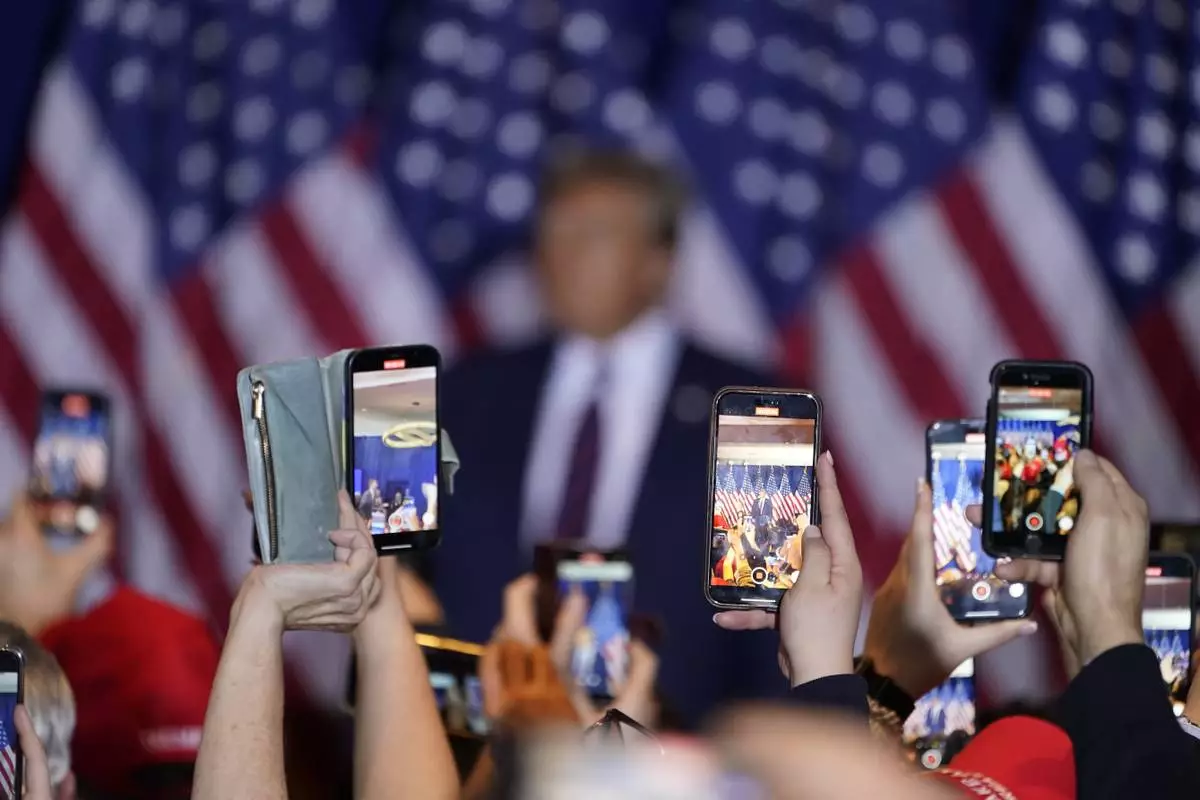
FILE - Republican presidential candidate former President Donald Trump speaks at an election night rally on primary election night in Nashua, N.H., Tuesday, Jan. 23, 2024. Election experts say they are concerned about AI’s potential to upend elections around the world through convincing deepfakes and other content that could mislead voters. (AP Photo/David Goldman, File)

Pages from the Campaign Nucleus website are seen on a computer in New York on Thursday, May 2, 2024. Political consultant Brad Parscale’s company, Campaign Nucleus, is boosting fundraising and voter engagement for the Trump campaign and other right-wing causes by leveraging data science to automate how political operatives identify and motivate their supporters. (AP Photo/Patrick Sison)

FILE - Brad Parscale, then-campaign manager for President Donald Trump, speaks during a campaign rally at the Target Center in Minneapolis, Oct. 10, 2019. Parscale, the digital campaign operative who helped engineer Trump’s 2016 presidential victory, vows that his new, AI-powered platform will dramatically overhaul not just polling, but also campaigning. (AP Photo/Evan Vucci, File)







